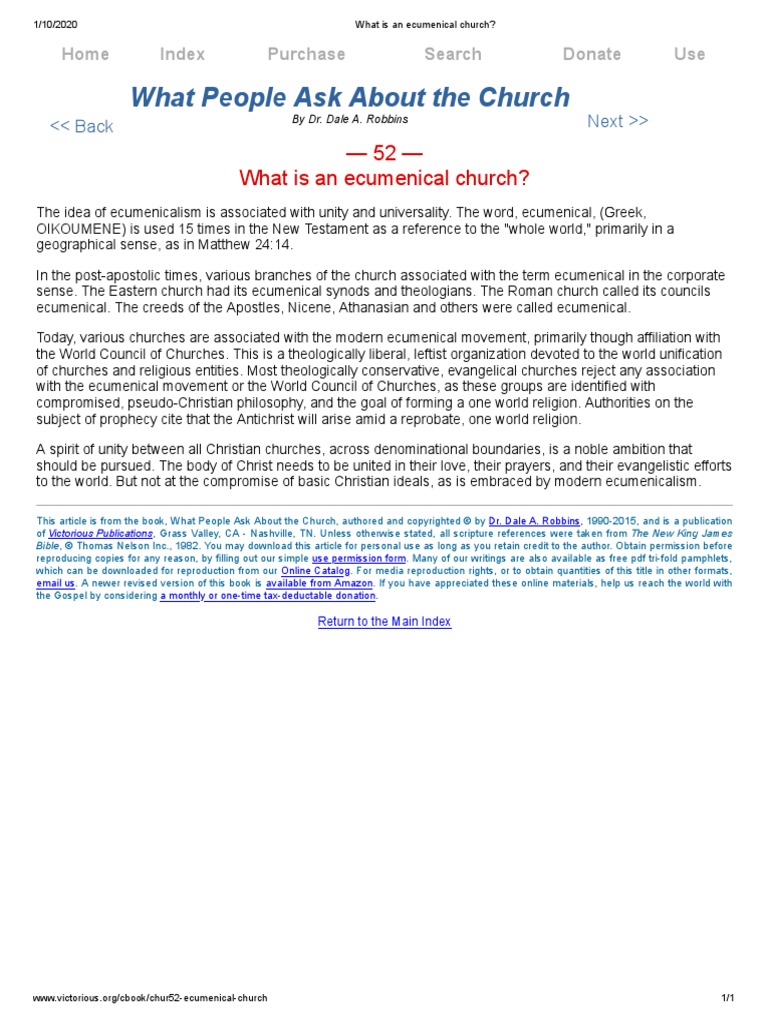The concept of the Uniting Church ostensibly poses an intriguing question: how can diverse Christian denominations embody the ideals of unity, yet retain distinct identities? This query invites both candid reflection and spirited dialogue, as ecumenical movements grapple with the paradox of unity amidst diversity. In a world often fraught with sectarian divides, understanding the Uniting Church and its mission provides a vital perspective on the pursuit of ecumenical harmony within Christianity.
Historically, the Uniting Church emerged in Australia in 1977 as a synthesis of the Congregational, Methodist, and Presbyterian traditions. This joint endeavor aimed not merely at administrative consolidation; rather, it sought a genuine spiritual and theological convergence that would reflect the heart of the gospel. The Uniting Church’s formation represented a radical departure from the entrenched sectarianism that has often characterized Christianity. What makes this movement significant is its overarching objective: to cultivate a community that transcends divisive boundaries while fostering a shared commitment to Christ’s teachings.
Central to the ethos of the Uniting Church is the belief that, despite differing doctrinal positions, members can unite under the shared tenets of faith articulated in the Nicene Creed. This creed serves as a foundational articulation of Christian belief, providing a common ground upon which the Uniting Church can stand. The importance of this shared heritage cannot be overstated; it serves not only as a theological touchstone but also as a vehicle for promoting reconciliation among diverse traditions.
Moreover, the Uniting Church operates with a commitment to inclusivity, emphasizing the need for every believer’s voice to resonate within its communal framework. This inclusive approach is not merely a lofty ideal; it manifests in the church’s willingness to engage in dialogue with other denominations and traditions. Such engagement provides opportunities to address contentious issues while fostering mutual understanding. The Uniting Church’s synodical structure facilitates this dialogue by allowing for the representation of various congregational voices, ensuring that differing perspectives can be articulated and acknowledged.
Nevertheless, the pursuit of ecumenical unity does not come without its challenges. The Uniting Church, while embodying principles of inclusivity, must navigate the tensions that arise from doctrinal discrepancies. For instance, differing views on baptism, communion, and social ethics can generate friction within a congregational setting. How, then, can the Uniting Church address these theological divergences while maintaining a cohesive identity? This dilemma exemplifies the broader conundrum of ecumenism, where the desire for unity often collides with the reality of deep-seated doctrinal convictions.
One solution proposed within the Uniting Church is the practice of ‘diversity in unity,’ which allows congregations to uphold their unique theological stances while participating in joint worship and mission activities. This concept resonates with the early Christian communities that often grappled with differing interpretations of the faith yet managed to maintain fellowship. By honoring this historical precedent, the Uniting Church encourages a theological pluralism that recognizes the richness found in diverse expressions of faith.
Consider, for example, the Uniting Church’s approach to social justice issues, an area where many denominations have historically disagreed. The church’s commitment to social action is rooted in a specific theological framework that underscores the imperative for Christians to engage with societal injustices. By advocating for issues such as refugee rights, climate change, and economic inequality, the Uniting Church aligns itself with the prophetic tradition, demonstrating that faithful witness can take on various forms.
Yet, as the Uniting Church pursues this multifaceted approach to engagement, it invites an additional layer of inquiry: can unity effectively be achieved through the lens of social justice without compromising core theological beliefs? This question tests the limits of ecumenism and forces a reevaluation of what it means to embody Christ’s love in a fractured world.
Additionally, the Uniting Church offers a model for other Christian traditions seeking to navigate the complexities of denominational differences. Through its emphasis on dialogue, engagement, and mutual respect, the Uniting Church exemplifies the necessity of ongoing conversations about faith. This model invites other denominations to embrace a more collaborative spirit, fostering ecumenism as a dynamic process rather than a static endpoint.
Furthermore, the Uniting Church’s ecumenical endeavors extend beyond verbal dialogues; they manifest in concrete actions. The church participates in a range of ecumenical projects, such as joint community service initiatives, interfaith dialogue, and collaboration on theological education. These shared endeavors allow church members to experience firsthand the transformative power of unity in action, which in turn nourishes their faith and reinforces their commitment to the gospel.
In conclusion, the Uniting Church represents a pivotal development in the ongoing quest for ecumenical unity among Christian denominations. It champions a model of inclusivity and diversity, advocating for the coexistence of differing perspectives within the body of Christ. While it poses unique challenges, the Uniting Church affirms that authentic unity is possible when believers are willing to engage in meaningful dialogue, grounded in a shared commitment to the core tenets of faith. This pursuit serves as both a reminder and an invitation: to continually reimagine how unity can flourish within diversity, as a testament to the rich tapestry of the Christian faith.



